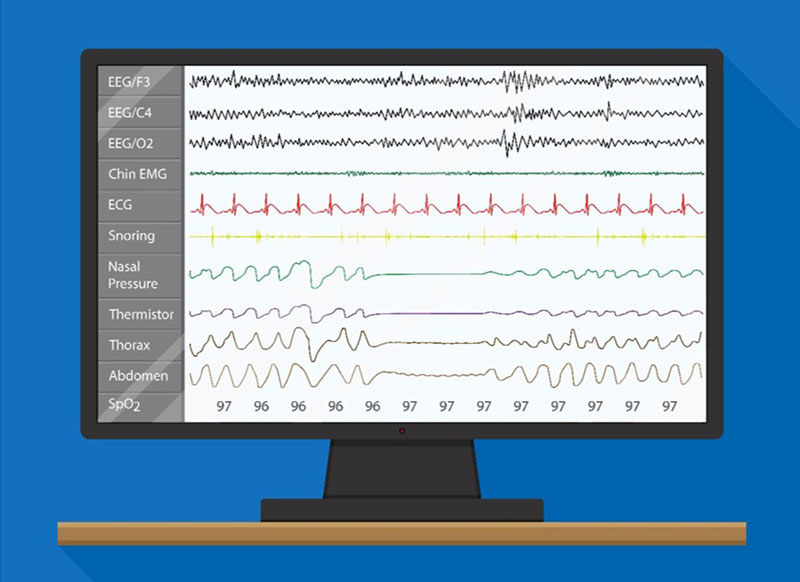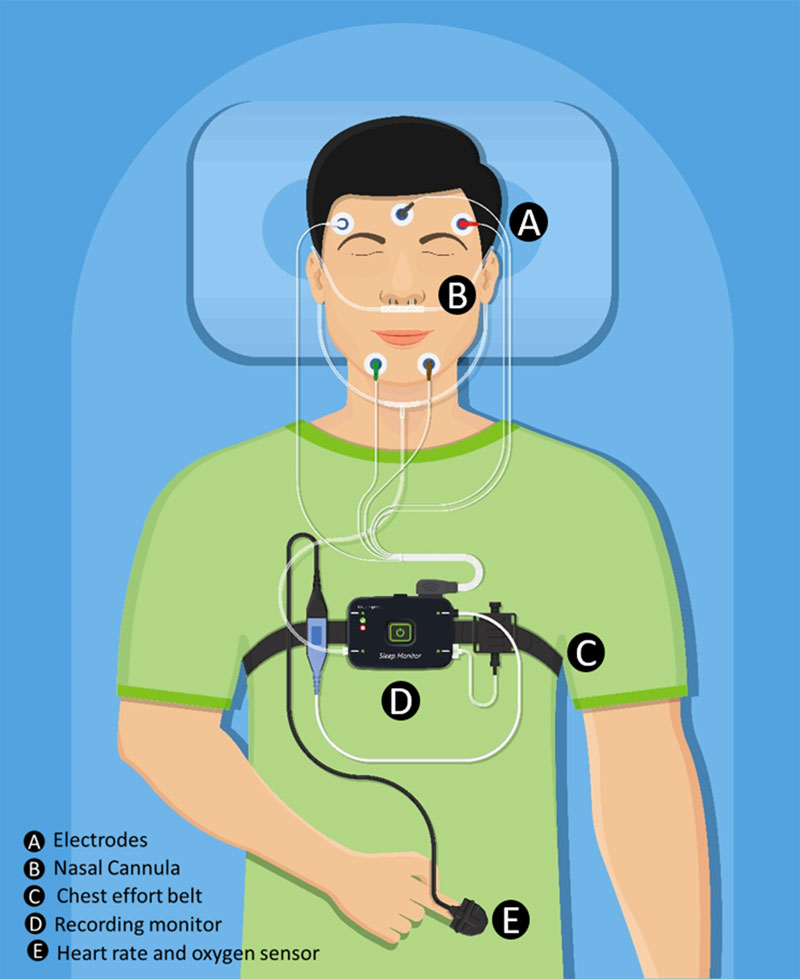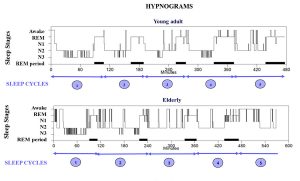What is sleep?
We all have some notion about the nature of sleep. However, when we really think about sleep, we begin to realize that it is actually tricky to define because we cannot really observe ourselves when we sleep. We are, in essence, elsewhere when it happens; we experience another state of mind. For researchers, studying the brain of a person who is awake and conscious is already challenging. So, it’s not surprising that it is even more puzzling to understand how the brain works when a person is sound asleep.
When science started to understand and described sleep, it was initially described as an inactive state of mind. We now know that this is not the case at all and that at specific times the brain is even more active during sleep than during wake.
Sleep started to reveal some of its mysteries with the invention of electroencephalography (EEG) in 1937. EEG is a non-painful way to measure the scalp brain electrical activity via electrodes. EEG is still a landmark today to better understand sleep and determine its phases.
If you need to get your sleep assessed for a diagnostic or a research purpose, you’ll see that sleep studies use a combination of measures, which are similar to EEG, to investigate your sleep quality and efficacy. Some of these measures also rely on electrical information and consist of electrodes placed on the skin, such as the electrooculogram (EOG) which measures eye movements; the electrodes of the electromyogram (EMG) are placed over limb muscles to measure their movements via electrical activity of limb muscles; and the electrocardiogram (ECG) electrodes over the chest measure heartbeat characteristics.
Sleep studies often test your breathing and lung function as it can explain several daily symptoms of poor sleep such as sleepiness* SLEEPINESS VERSUS FEELING FATIGUE Sleepiness is the urge or need, difficult to repress, to sleep during the day. Not to be confused with fatigue, which is a feeling of exhaustion that requires one to rest, but that does not translate into involuntary sleep or an excessive need for it. Tired people can fight sleep without difficulty during the day. Sleepy people, on the other hand, are consumed by sleep. They can fall asleep easily in class, at work or while driving, for example. Sleepiness is not a normal state because it is related to either an acute (sleep deprivation) or chronic sleep loss or poor sleep quality. Severe sleepiness is often a critical symptom of sleep disorders, but also of certain medical or psychological problems. Don’t sleep on it!. To do so, respiratory rates and efforts and oxygen levels are recorded with a nose cannula, an effort belt placed over your chest and an abdomen and a heart rate and oxygen sensor at the tip of one of your fingers for example.
When used to measure sleep in a laboratory (a clinic or a research laboratory) or as a portable device at home, the combination of EEG, EOG, EMG, ECG, breathing and lung parameters is called polysomnography (PSG). It consists of simultaneous recordings of multiple physiologic variables related to sleep as well as wakefulness. To this day, PSG is the only tool that makes it possible to accurately determine sleep stages, and it is the most common tool for sleep research and medicine.
First used mostly by sleep researchers to uncover sleep architecture (the stages and cycles of sleep), polysomnography is now an essential part of the diagnosis and rule-out process of sleep-related disorders, including sleep apnea, narcolepsy, hypersomnia and periodic limb movement disorder (PLMD). Since PSG is non-invasive and safe, it can be used at any age, for children as well as for the elderlies.
Observational and self-reported measures, such as sleep questionnaires, sleep-wake diary and dream reports are also powerful and essential tools to study sleep and potentially establish diagnosis and medical care.
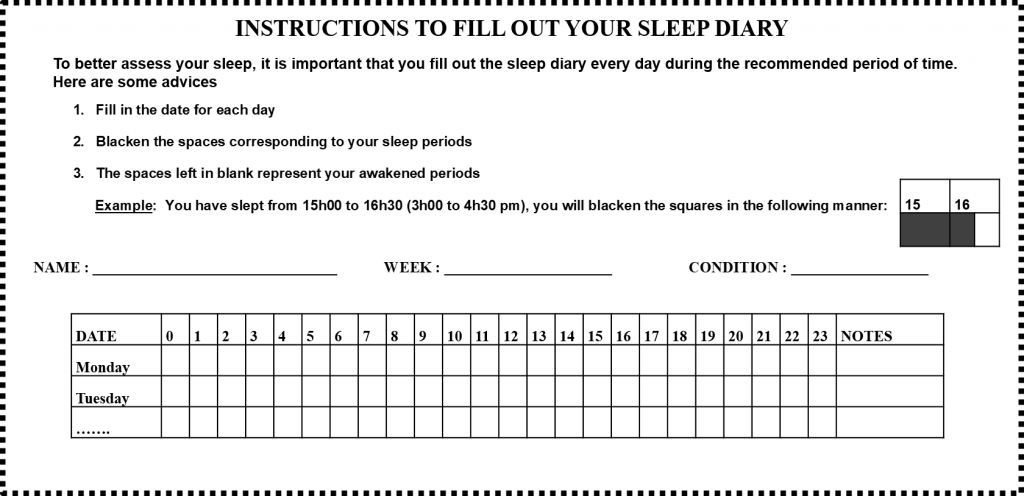
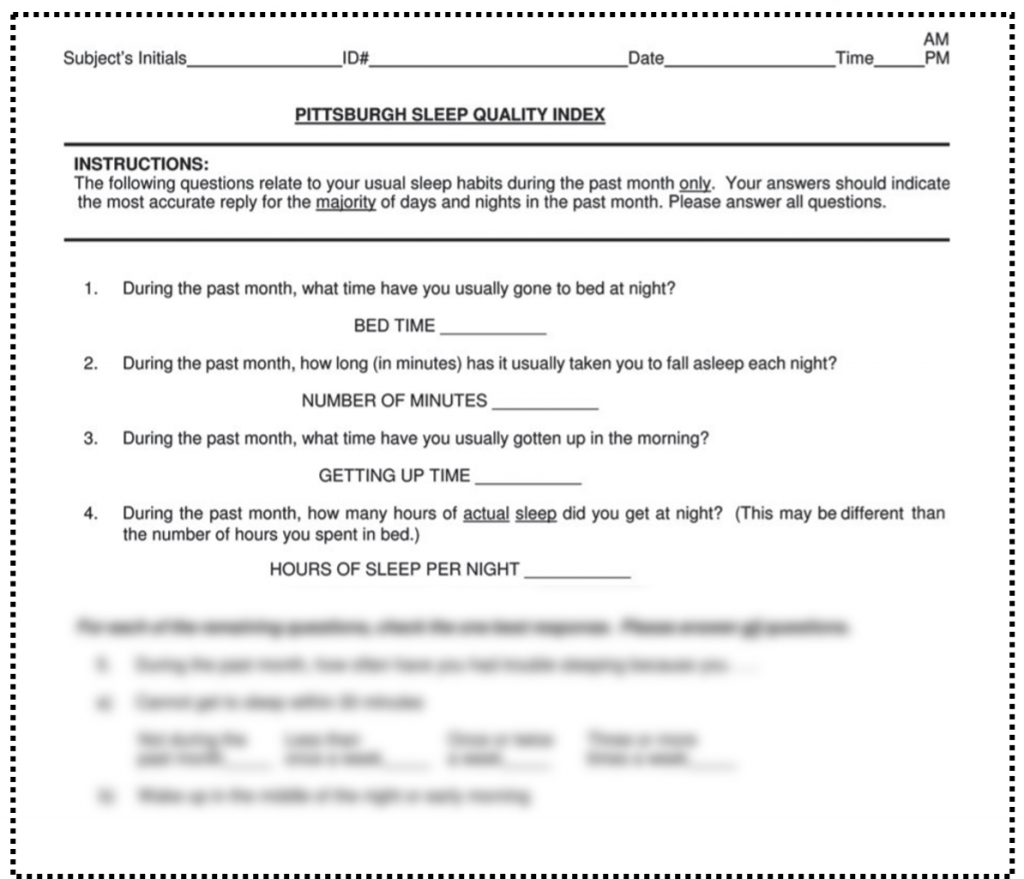
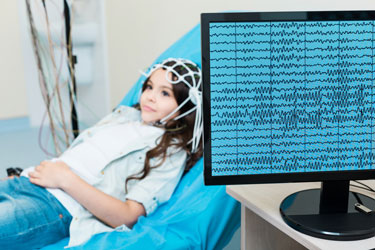
Sleep stages
While asleep, brain cells (i.e.neurons) are not inactive, on the contrary, they are very busy bees ! Different levels of consciousness (such as being awake, asleep or in a coma) can be visualized with an EEG. Two main sleep stages can be identified by the brain waves observed on the EEG: slow-wave sleep (SWS) and paradoxical or rapid-eye-movement (REM) sleep. SWS is divided into light SWS and deep SWS.
The visible shapes of these EEG measured waves changes as one progresses from one sleep stage to another. The more SWS becomes deep, the more the EEG shows brain waves that are slow and of large amplitudes. During paradoxical sleep (REM sleep), EEG waves are more similar to brain waves observed during light SWS or wakefulness.
Aside from the difference observed on the EEG, other sleep measures (EOG, EMG, ECG, breathing parameters) also differ between the stages.
For example, during our REM sleep, it is possible to see eyes rolling in their orbit and random eye saccades while sleepers’ eyes are still closed. Furthermore during this stage, muscles are paralyzed with no muscle tone throughout the body as recorded by the EMG, except for the eyes.
During the night, SWS (light and deep) and REM sleep stages alternate, creating what is called a sleep cycle. A cycle usually lasts about 90 minutes on average, and a regular adult night has about five or six 90-minute cycles, for a total of seven to nine hours.
Most of the time, after a REM sleep period, the 90 minutes sleep cycle ends with a very brief awakening episode or very light sleep, which most sleepers do not recall. This sequence repeats itself with more deep SWS and less in REM sleep as the night advances. Thus, sleep cycle composition changes during the night. Typically, there is more time spent in deep sleep at the beginning of the night, during the first two sleep cycles, and as we get close to waking up, there is more and more time spent in REM sleep. At the end of the night we can spend as much as an hour in REM sleep.
This typical sleep architecture of passing from one sleep stage to another in cycles varies, however. Babies, infants, teenagers, adults and the elderly all have different characteristics (see sections on sleep needs at different ages: Sleep: a personal and lifelong natural need and Age-specific dos and don’ts). This architecture is also not the same if an individual is sleep-deprived or has a sleep disorder or sleep-related condition. Brain waves are good indicators of what is going on while we sleep, but this electric avenue does not map it all out. Within a few years, advances in neuroscience should reveal more and more the mysteries of that crucial part of our lives, and reveal even more of what’s going on in our brain while we are in the arms of Morpheus.
* SLEEPINESS VERSUS FEELING FATIGUE
Sleepiness is the urge or need, difficult to repress, to sleep during the day. Not to be confused with fatigue, which is a feeling of exhaustion that requires one to rest, but that does not translate into involuntary sleep or an excessive need for it. Tired people can fight sleep without difficulty during the day. Sleepy people, on the other hand, are consumed by sleep. They can fall asleep easily in class, at work or while driving, for example. Sleepiness is not a normal state because it is related to either an acute (sleep deprivation) or chronic sleep loss or poor sleep quality. Severe sleepiness is often a critical symptom of sleep disorders, but also of certain medical or psychological problems. Don’t sleep on it!
